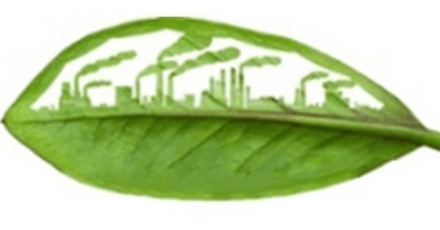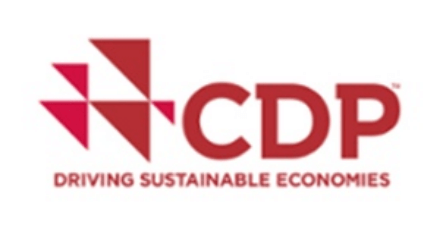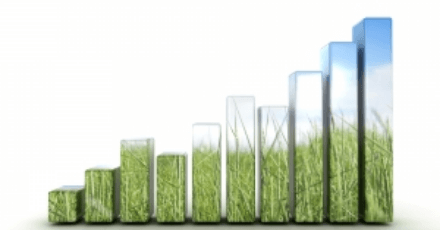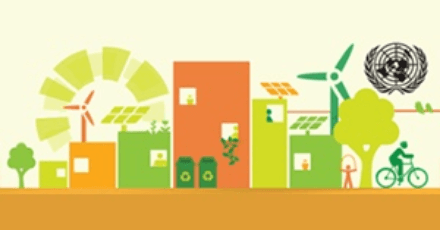Energy Management: How to Reduce your Heating Consumption at Home

Although scientists agree the planet is getting hotter, we will still need to keep warm in the immediate future since we will be experiencing extreme weather fluctuations causing events like power outages.
Easy Energy Management Tips to Save Money on Heating at Work

No point in paying for energy you’re not using. Here are some energy management tips and easy ways to spend less money on heating at work.
The Quest for a Sustainable Fashion Culture

Fashion trends tend to change quickly, which can lead to unsustainable manufacturing practices. With various industries moving toward innovation and sustainability, the world of shoes and apparel has begun exploring sustainable fashion. “Eco fashion” is defined as a growing cultural trend that aims to promote more sustainable, environmentally-friendly and ethical products. By being environmentally conscious, reducing their carbon footprint and buying locally produced raw materials, fashion consumers help support eco fashion.
Sustainable Fashion: Golden Opportunity or Oxymoron?

At first glance, the phrase “sustainable fashion” may seem to be an oxymoron. Fashion, after all, is a resource-intensive industry. It takes about 7,000-29,000 liters of water to produce one kilogram of cotton, the world’s primary clothing material.
How an Investment Plan Can Change the Way Europe Achieves Sustainability

Europe has made great strides in achieving sustainability. In Sweden, garbage is incinerated in order to provide heat to thousands of local homes. About 15% of the UK’s electricity was derived from renewable sources in 2013. In Switzerland, 94% of old glass and 81% of PET containers are recycled. Although Austria is only 84,000 square kilometers and has a population of nearly 8 million, 46% of its land is forested.
How Google Earth Promotes Environmental Protection in Near Real-Time

For many years, Google Earth has allowed anyone with a fast internet connection to explore the world from their desk without having to step on a plane. A scroll of the mouse lets you zoom and glide over stitched together satellite photos of the world. With improvements to the technology that allow users to view the world in near-real time, people have found creative ways to use it for various purposes.
Golden State, goldenlawn? Xeriscaping: A Water Management Practice

With drought being the hot topic in California since Governor Brown’s emergency proclamation, the Golden State’s residents have made efforts to reduce their water footprint and start water conservation efforts with mandatory restrictions in place. These include limitations on yard watering during the day to reduce water loss through evaporation. Some residents have opted for the “golden lawn” as a water conservation practice to prevent the risk of being fined for overwatering. The effects of this drought are literally turning California into the “Golden” State. Is a dead lawn the only option we have to save water? Certainly not! Do we have any other options? Of course! There are many ways to implement water management that can help in being responsible and sustainable in this drought.
4 Energy Management Tips to Lower Your Air Conditioner’s Energy Consumption

Today, we’re taking a look at four energy management tips to lower your AC’s energy consumption.
Building a Sustainable Workplace

With the recognition that some people spend more time at work than in their homes, being part of a healthy, sustainable work environment is important. This type of workplace correlates to happier employees, increased employee productivity and fewer work-related illnesses, which helps companies achieve better profitability.
Sustainability in the Supply Chain

Companies are becoming increasingly aware of the internal importance of sustainability and environmental planning. One element of their commitment to responsible business practices is addressing the sustainability of their supply chains: the network of organizations, people, activities, companies and resources involved in producing, handling and distributing products. A sustainable supply chain amounts to much more than meeting a commitment—it is a driver of value and success for business and society.
Tips to make your Air Conditioner Energy Efficient in a Heat Wave

Climate change and global warming are making heat waves occur more often. When there is a heat wave, that’s when we realize we should pay more attention to sustainability and environmental issues. It’s easy to lose sight of the big picture when we feel cool and comfortable with air conditioning (AC) at home. It’s great…until you get your electricity bill. That’s when you realize you should also pay more attention to energy management. You see, they all go together—sustainability, environmental responsibility and energy management. What is energy management? I’m not referring to the kind of commercial energy management that requires energy management consultants. I’m talking about the kind of energy management that the average consumer can perform to ensure energy optimization in their homes in terms of reducing consumption.
Sustainability Plans and You

During last week’s webinar we took a look at what exactly a sustainability plan is. Going through all this information can seem a bit overwhelming, but with the right focus it becomes a more tangible concept. To get started, we need to ask ourselves first the question: What is sustainability? There are a few definitions of sustainability, but the one that strikes the strongest chord is, “meeting the needs of the present generation without compromising the ability of future generations to meet their own needs.” It is our responsibility as humans to take care of this world so that the world can, in turn, take care of us, now and for generations to come. In other words, sustainability creates and maintains the conditions under which humans and nature can exist in productive harmony and allow the fulfilment of the social, economic and other requirements of present and future generations.
Why California’s Drought is a Global Issue

California is experiencing a historic drought , which is now in its fourth year. In Northern Cali fornia, ski resorts have very little snow covering their hills while other states in the Eastern part of the country have faced record-breaking blizzards. According to a report from the University of California, Davis, the economic impact of this unprecedented drought is nearing $2 billion. In response, the state has been taking bold actions to conserve water. At a meet-the-press event, California Governor Jerry Brown criticized political leaders who continue to disregard climate change and its consequences. He pointed to their opposition to President Obama’s efforts in curbing climate change as one of the reasons why the United States’ climate change initiatives have yet to achieve their intended level of effectiveness. With the drought expected to continue, state leaders like Gov. Brown have taken steps to cut back on water usage, letting the grass go brown in their backyards as a symbolic act of support for climate change initiatives.
Collaborating to Meet Global Sustainability Needs

Corporate transparency related to environmental impacts is gaining more traction worldwide due to sustainability-inclined investors and consumers, as well as better legislation and purchasing priorities. These factors drive companies to commit more resources to measuring and mitigating their environmental impacts. This is an important development, as it aligns with the United Nations’ Sustainable Development Goals (SDG). Many of the goals in this framework fall within a variety of Environmental, Social and Governance (ESG) issues, including accessibility and sustainable management of water and sanitation; reliable and sustainable modern energy for all; promotion of sustainable economic development and useful, decent work for all; construction of resilient infrastructure and promoting sustainable industrialization; fighting climate change and its impacts; and strengthening the implementation and revitalization of global partnerships.
The Role of Technology in Sustainability: Innovative Solutions

Climate change seems to be on many agendas including developed and developing countries; business organizations and local communities. While one of the obvious approaches to address climate change is to limit the consumption of fossil fuels, this is not enough by itself. Green technologies play an important part in reducing greenhouse gas emissions and helping organizations and communities adapt to the impacts of climate change, oftentimes supporting and enhancing sustainability efforts that are already in place. There are positive indications that the global community continues to transition to green technologies and investments in renewable energy have gone up significantly, with 2014 seeing $270 billion in investments worldwide. In the global marketplace, green technology is critical to sustainable development. Organizations view technology as an effective tool in aligning business objectives with sustainability goals. Companies such as H&M and Puma, inspired by the circular economy model, have teamed up to utilize textile-to-textile recycling technology as part of their business strategy to integrate sustainable practices into corporate operations. By reusing and repurposing old or unused products, companies are, simply put, more sustainable.
Sustainability in the Built Environment

Cities all over the world are trying different ways to contribute to global sustainability. One popular practice is the creation of “green” buildings: structures built using sustainable materials or modified to become sustainable. Such structures provide cities with infrastructure that will stand the test of time with little maintenance. This can be achieved through a variety of design innovations, such as the use of renewable sources instead of fossil fuels for energy and the use of renewable materials for renovation.
The ‘Road to 100A’: Managing Your Scope 3 Emissions

Experts agree environmental risks are one of the underlying causes of operational issues that negatively impact companies. Disclosing environmental data is an important aspect of corporate transparency valued by stakeholders. In 2014, over 5,000 companies from more than 80 countries chose to report, manage and share vital environmental information through CDP. Why? Because it demonstrates to investors, supply chains and governments that you are managing risks and capitalizing on opportunities, in addition to reducing the impact your operations have on the resources you rely on—all of which attract investors and customers, and strengthen your brand.
Is your Business Capable of Marketing Sustainability Effectively?

Climate change has transformed the way global companies and the general population perceive sustainability and its importance to communities and the environment. Organizations now pay closer attention to becoming more sustainable in their business practices, and consumers are becoming “greener” in their product choices. According to Maria Garrido, International Marketing Director for international advertising agency Havas, consumers are willing to spend money on a brand if they see it as a meaningful brand. Their operational concept of brand “meaningfulness” consists of three value propositions: 1) marketplace benefits, or the value delivered by products; 2) personal benefits, or the capability of a brand to connect to customers; and 3) collective benefits, or a brand’s overall contribution to society and the environment.
Carbon Pricing for a more Sustainable Economy

Global organizations regard climate change as a serious business risk that directly impacts their business operations. Climate change leads to environmental risks such as floods, heat stress and droughts, which adversely affect organizations, especially their supply chains, consumers and revenue streams. As a result, people are realizing that the framework we use for conducting business and producing goods and services needs to change.
4 Ways to Integrate Sustainability into Your Core Business

Global organizations recognize the importance of incorporating Environmental, Social and Governance (ESG) considerations in planning for core businesses. With increasing opportunities arising from trends in global sustainability, companies and their leaders are embracing sustainable development to respond to environmental and social issues that affect the way they operate.
Global Nations and their Transition towards Clean and Renewable Energy

There is a perception by some that renewable energy is expensive and only wealthy countries have access. Some think that developing countries can only afford less expensive fossil fuels. Over the years, however, significant green technological advances have made it possible for developing countries to access affordable clean energy. These countries are also the source of some of the most extraordinary wind, solar, geothermal, biomass, hydro and other natural resources. Climatescope, a country-by-country assessment, interactive report and index, conducted a study on the clean energy activities of emerging markets from 55 developing nations in Africa, Asia, Latin America and the Caribbean. The results revealed that renewable technologies are an energy solution as cost-effective for developing nations as they are for developed ones. Topping the list in the Climatescope 2014 study of developing countries with the most effective clean energy and renewable technology investments are China, Brazil, South Africa, India, Chile, Uruguay, Kenya, Mexico, Indonesia and Uganda.
Top 3 Global Companies and their Best Energy Practices

Managing energy consumption is an integral component of an organization’s sustainability efforts. By establishing and practicing the right energy management strategies, organizations achieve tangible results reflected in their return on investment (ROI) and productivity reports. Being energy-efficient helps organizations reduce operational costs and lessen carbon activity. If joint global efforts on energy management were universally implemented, a 40% reduction of greenhouse gas (GHG) emissions from their 1990 levels will be achieved by 2030, according to a McKinsey report.
Is Energy Management Part of Your Journey Towards Innovation?

Companies are beginning to see the importance of establishing efficient and innovative energy management systems, especially as they relate to mitigating the risks that directly affect how businesses operate. Industry experts note that recent technological advancements and innovations in energy efficiency strategies help industries grow and achieve healthier profits, by improving operational efficiency.
3 Business Mitigation Practices to Better Manage Impacts of Climate Change

The impacts of global climate change are felt in business and everyday life. They are evident in heavy rainfalls and thunderstorms, melting polar ice caps, increasing global temperatures, longer droughts, and rising sea-levels and flash floods. As reported by the United States Environmental Protection Agency, climate change is considered a major threat to mankind. Climate-related issues adversely affect our access to basic human needs such as food, shelter, water and health.Farmers are particularly affected, as drought or major flooding lead to a decrease in crop yields and livestock productivity. Climate change impacts must be addressed in order to secure our collective future.
How Sustainable Is Your Business?

Over the past few years, integrating sustainability into an organization’s business agenda has become a necessity. Organizations face environmental risks brought about by climate change including droughts, flood and heat stress. In order to address these challenges, companies need to reinvent their sustainability strategy and risk management capabilities.
Top 3 Corporate Sustainability Champions for 2015

As corporate sustainability rapidly becomes a core element of global business, companies need to adjust accordingly to be competitive. Industry experts advise that to be able to embrace the paradigm shift, organizations must have key leaders who have a clear vision of the direction of their environmental, social and governance (ESG) programs. They need the right sustainability leaders to continually raise the bar when it comes to the sustainability programs reflected in their annual corporate social responsibility (CSR) reports. The Guardian News stressed that these reports are considered vital by shareholders and investors in their decision-making process, as they showcase a company’s ESG and CSR efforts.
The Road to a Sustainable Future

Global leaders achieved a major landmark on climate change mitigation during last year’s United Nations Climate Change Conference. The annual event, established during the mid-1990s, aids the United Nations Framework Convention on Climate Change (UNFCCC) to establish a platform for openly discussing the Kyoto Protocol and negotiating its implementation.
Lessons from 2014’s Sustainability Initiatives

2014 was an eventful year for sustainable development and climate change mitigation efforts. As the impact of the changing climate became more indisputable, initiatives for sustainable development continued to promote dialogue among private sector, government and non-governmental organizations (NGOs) around the globe. Sustainable development initiatives gained traction worldwide in 2014; some highlights included: the UN Secretary-General Ban Ki-Moon organizing the UN Climate Summit held during Climate Week NYC; the EU announcing the reduction by at least 40% of its carbon emissions by 2030; and China and the United States’ climate agreement at the COP20 in Lima, Peru.
What’s Next for Corporate Water Stewardship in the Business Industry?

The 2014 United Nations World Water Development Report anticipates that global water demand will increase by 55% by the year 2050, due to increasing water requirements for manufacturing, thermal electricity generation and domestic consumer use. Supporting this projection is Ceres, a non-profit organization promoting sustainability leadership, which predicts that continuous population and economic growth will trigger a growing demand for more potable water and food in the coming years. According to WWF, a leading conservation organization, the agricultural sector alone consumes about 70% of the world’s freshwater resources. Food production relies on water, and unsustainable water use in the agricultural sector can harm the environment, resulting in a diminished supply of clean and potable water.
How Sustainability is Helping the Manufacturing Industry Thrive

The manufacturing industry was hit hard by the global financial crisis of 2008. As some manufacturing facilities could no longer pay for production costs, they had to close their doors, causing layoffs all over the world.